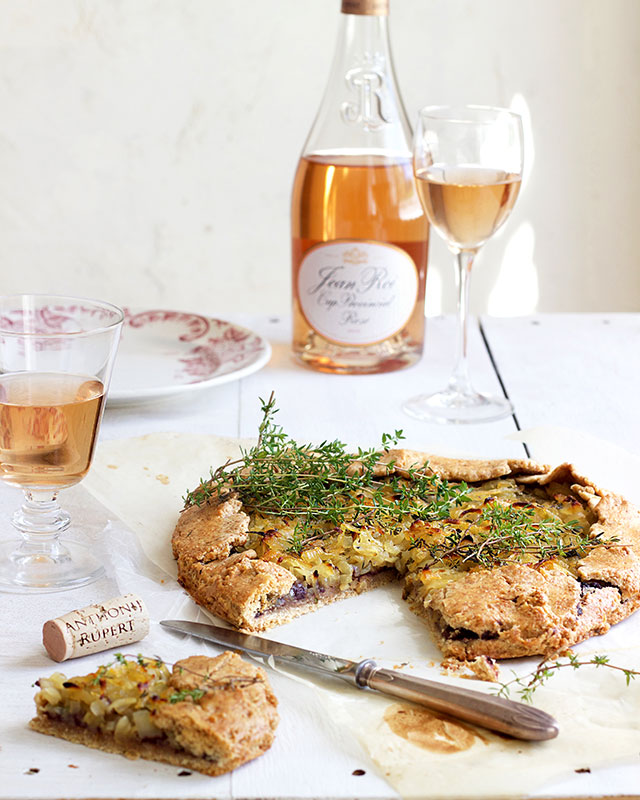Few things put me in touch with my inner earth mother/domestic goddess quite like baking bread does. When I’m in a hurry a basic white loaf made with a sachet of store yeast does the trick nicely. When I’m really, really in a hurry, Irish soda bread is my go-to. Nice enough to be sure, but neither of these is the real-real deal. Nope, for the real-real deal you need a bread made of natural yeast, yeast that forms spontaneously given enough time and care. The way they baked bread say… oh about a thousand years ago.
So when master baker from Cape Town’s Loaves on Long, Ciska Rossouw, and her business partner, Rickma Coxon, recently invited me and a few other foodie media types to a sourdough masterclass, naturally I was there with bells on.
I’ve baked loads of different breads over the years, but funnily enough sourdough, with its delightful almost nutty caramel flavours with just a hint of sour underneath, never made it onto the list. And more’s the pity, because sourdough is actually way easier to make than you think. Your major investment when making sourdough bread isn’t hard work – it’s patience. A little bit of baking love also makes a difference I think. Ciska runs artisanal bread and fine pastry masterclasses at Loaves on Long’s quaint premises at 33 Long Street on Saturdays. Going to one is a total blast. It’s informal, chatty and, importantly, very hands–on in a totally non-judgemental way. So if your kneading skills aren’t up to scratch, or your clumsy attempts to get your creation in their oven threaten every light fitting in sight, they’ll be totally cool.
There are a couple of basics to bear in mind when making the perfect sourdough. Really good unbleached, stone-ground flour is important. So too is a seriously hot oven and a hot baking surface like a pizza stone. Other than that, relax and enjoy the process. Because making sourdough isn’t just baking people, it’s living.
All you need is…
FOR THE STARTER DOUGH
250g wholewheat flour
250g white bread flour
500g water (do weigh your water because no two measuring jugs are ever the same, no matter what those little red lines say)
FOR THE STARTER’S DAILY FEED
50g wholewheat flour
50g white bread flour
100g water
FOR YOUR SOURDOUGH BREAD
450g white bread flour
50 g wholewheat flour
200g sourdough starter
375g water
10g salt
MAKING AND FEEDING THE SOURDOUGH STARTER
Mix the starter dough ingredients well, cover with a cloth and set aside at room temperature. Feed it daily using the feed quantity as listed above. (Ciska says an ideal feeding regiment for a starter kept at room temperature is two feedings a day at 12-hour intervals.) Eyeball it. Once your starter dough looks busy and bubbling, it’s time for its next feed.
Super NB: to keep the pH levels steady and ensure that there is enough food for the forming yeast, do not let your starter dough volume increase. So if you’re going to add 200g when you feed it, first remove 200g from the starter so you in effect always have the same quantity of starter dough. It will take about 7 days for your starter to become active enough to bake with. To test if it’s ready to use, drop a spoonful of it into water. If it floats, it’s good to go.
Sourdough starter is remarkably stable and resistant to spoilage due to the high acidity. But Ciska says if it’s ‘ominously’ red or pink, shows mould growth or smells ‘decidedly putrid’ – again her words – it’s gotta go. In the bin that is.
Red-hot tip: Yes it is a bit of a to-do making the starter and you may not use it all. You can of course give it away as a gift to a baking buddy; you can keep it alive and keep on nurturing/feeding it so you always have ready starter available or your can – drum roll please – freeze it! To bring it back to life once you’ve defrosted it will take a day or two and you will need to feed it of course.
MAKING YOUR SOURDOUGH BREAD
Combine the flour, starter and water. Mix by hand until it just comes together. Make a dent in the top and drop in the salt and a tablespoon of water. Allow it to rest for 20 minutes, then tumble it out onto a lightly floured surface and kneed the dough for about 5 minutes until it start to become smooth. Place dough in a clean oiled bowl (an empty ice cream container is great for this), cover with a cloth and leave for 30 minutes. Then the folding starts. Wet your hands and fold the left side of the dough to the middle. Repeat with the right side of the dough. Then do the exact same folding with the top and bottom of the dough as well. This folding (all 4 sides) needs to be repeated 4-6 times at 30-minute intervals. Ciska says it’s very important as it stretches the gluten strands and ultimately allows for a lovely open crumb.
Shape the dough into a round. Use a sharp blade (an old-fashioned razor blade is ideal) to lightly cut gorgeous lines on the surface – this is where your inner creative genius comes out. Place it onto a pre-heated pizza stone or baking tray in a super hot oven, basically as hot as your oven will go. Baking should take 25-35 minutes. Tap it and if it is hollow, it’s time to tuck in. Thank you Ciska and Rickma – the lovely ladies of Loaves on Long rock!
ABOUT LOAVES ON LONG: Loaves on Long, at 33 Long Street in Cape Town’s city centre, is open from 6:30 am until 5pm Monday to Friday, and from 8am until 3pm on Saturdays. Visit them to buy utterly gorgeous bread and pastries, for breakfast and for lunch. They are licensed. Mail them at info@loavesonlong.co.za for more about their super bread and pastry masterclasses and special evening functions on their balcony.
makes
1 loaf
prep
long
bake
35 min


















Leave A Comment